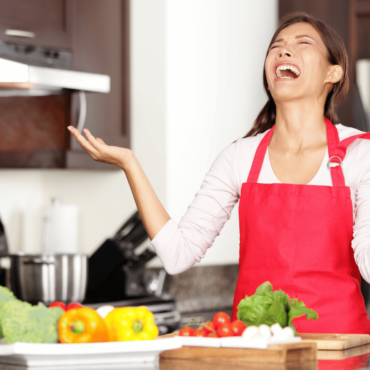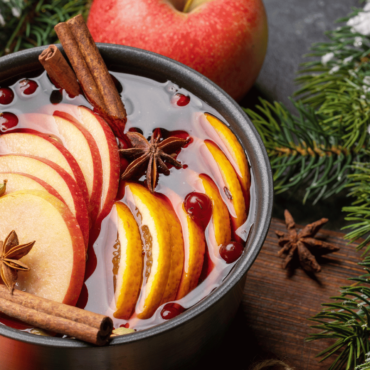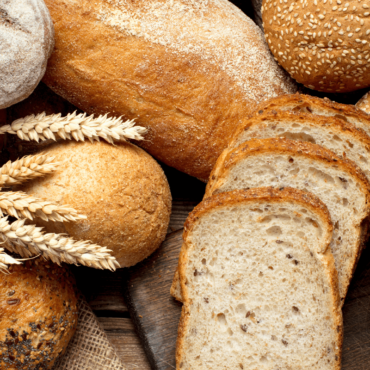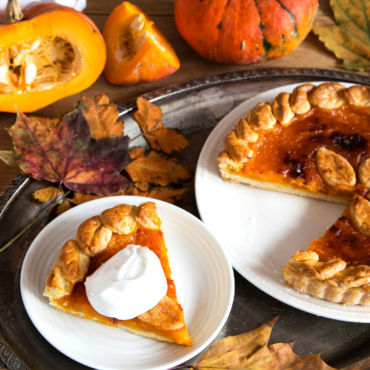Blog & News
Food fight
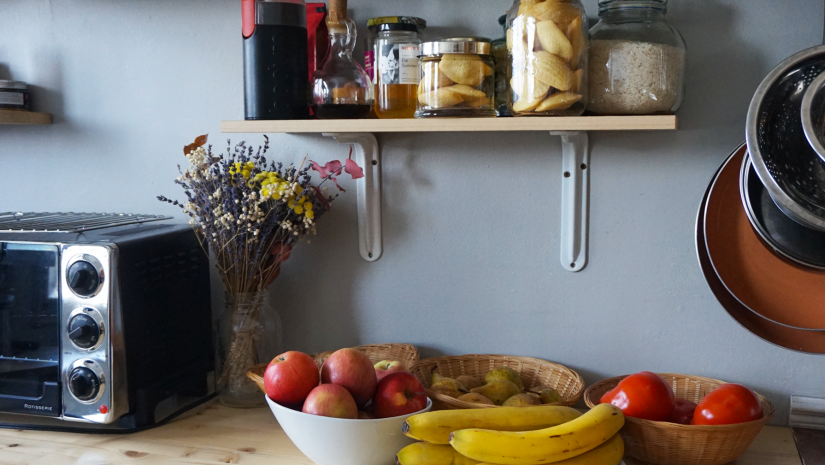
A year and a half ago, I joined the team at Earth Day to coordinate the Food Fight program, which holds free conferences across Quebec and New Brunswick through the Fonds Éco IGA. As I came to grips with the problem of food waste, I started including more anti-waste actions in my everyday life until I could no longer remember how I used to do things before! I want to share the 5 most beneficial anti-waste tricks I’ve learned, which I plan to continue using forever 😉
The “Hurry up and eat me!” basket
No more forgotten cartons of cream, onion halves getting pushed around or half-empty jars of sauce disappearing into the back of the fridge. Now, I keep a small container in a clearly visible spot and fill it with everything that needs to be consumed right away, reminding me that I need to eat these items ASAP! It’s a real time saver when I’m trying to figure out what needs to be eaten first. I reused a plastic tray that originally contained mushrooms for the container.
A place for everything and everything in its place
Before, my fridge wasn’t organized at all. Food got stored wherever there was room—at the expense of some items that slowly got pushed further and further back until they disappeared from sight. We all know how that story ends! Now, my fridge is well organized and I make sure everyone knows where things go: fruits and veggies always go in the crisper, condiments in the door, leftovers in the coldest area (the top shelf in my case) and dairy products on the middle shelf. I also have a transparent container where I keep cheeses and other dairy products. Some fridges have one or more transparent drawers in addition to the crisper, which is also very practical.
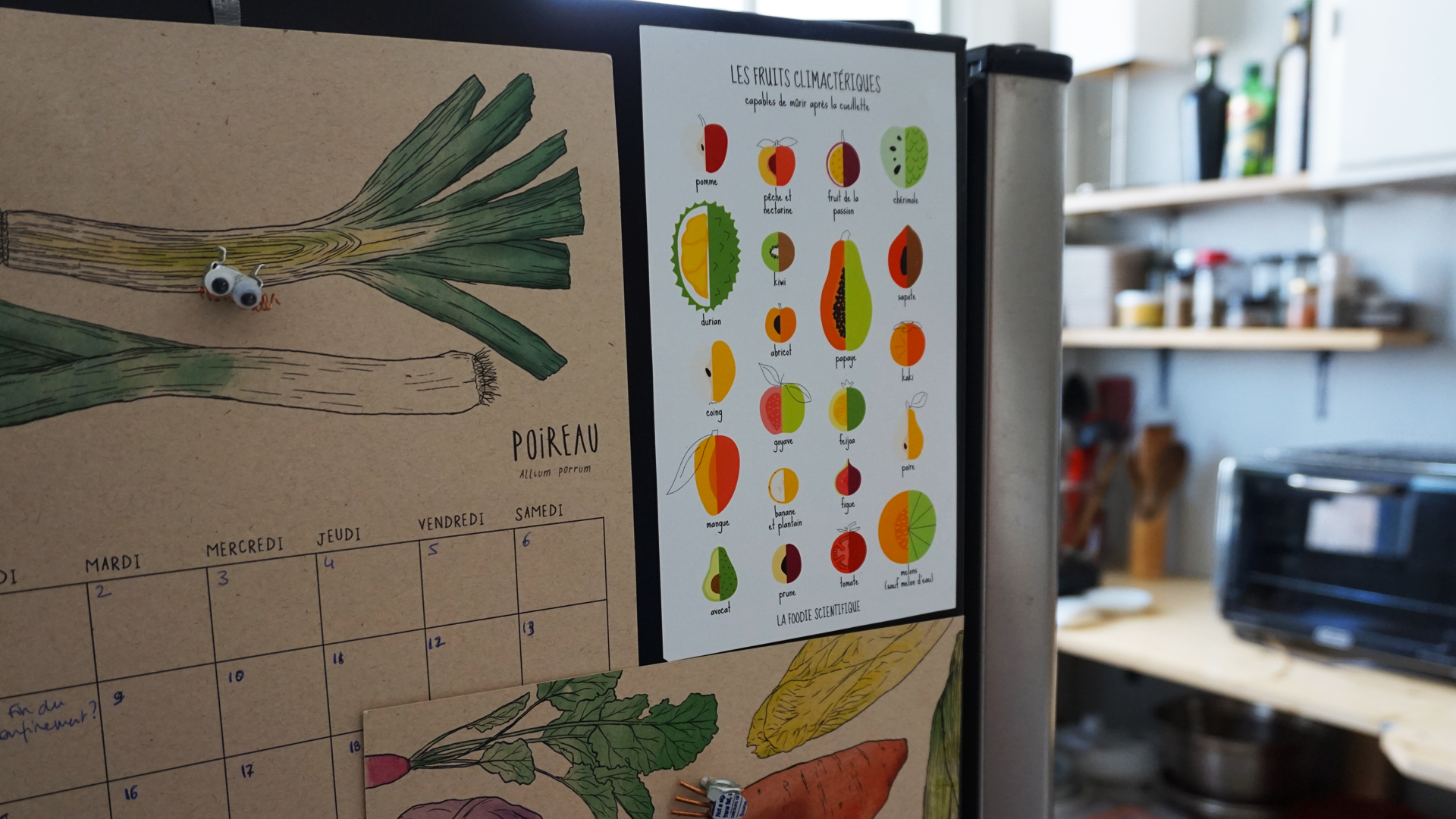
Clear some space on the counter
It’s easy to throw all your food in the fridge when you get home from doing groceries, but that’s not the optimal way to preserve certain foods. Some fruits and veggies don’t do well in the cold (bananas turn brown, tomatoes become mealy) and deserve a spot on the counter. In addition, some fruit continues to ripen after being picked (climacteric fruit) and produces a gas that can rot other fruit that is non-climacteric or already ripe.
That’s why it’s important to avoid storing all types of fruit together. I use separate dishes (pie dishes or plates) to store each type of fruit and have one basket for onions, garlic and shallots and another for potatoes (which I cover to protect them from light and to prevent germination). When I want certain fruits to ripen—such as tomatoes or avocados—I store them with bananas so they ripen faster. Using dishes for storage makes it easier to store tender fruits without piling them on top of each other. Both the dishes and baskets can easily be found in a second-hand store.

Change the packaging and use a cloth to soak up excess moisture
Have you ever noticed how mushrooms come in such tightly packed trays? To give them more space and prevent them from spoiling, I transfer them into a paper bag as soon as possible, then close it and put it in the crisper. That way, the moisture level is controlled and no mushroom “juice” accumulates. After a while, the mushrooms may dry out, but they’re still good as long as they don’t become slimy or turn dark.
When I buy salad leaves in a container, I either transfer them into a larger container with a cloth at the bottom or I place a cloth over the salad and turn the container upside down so that the cloth soaks up any moisture that drops onto it from above. I do the same thing with bags of carrots: I place a cloth inside the bag and change it from time to time.
Freeze everything, lose nothing
I got into the habit of freezing all kinds of food: fresh veggies to be added to soups, leftover meals frozen in small portions, recently opened sauces that I don’t plan on using soon and even vegetable peels and scraps. I use all the scraps and peels (except for potato peels) to make tasty homemade broth. Once leftover sauce is frozen, I don’t have to worry about mould forming on top. And these days I always have a dish ready to grab out of my freezer and reheat. In addition, one of my colleagues has a passion for using ice cube trays to freeze small quantities of all kinds of sauces.

Sometimes it can take time to find the methods that work best for you. But because these habits are so simple and effective, I was able to transition into them easily. My compost bin fills up more slowly now and I throw out way less unpleasant looking (and smelling!) food. Not to mention the money I’ve saved on groceries! To learn even more practical anti-waste tips, take part in a Food Fight conference—they’re free!

Workshops, Team Manager
Camille Defoly
Joyful and positive, Camille is convinced that intentional daily actions make a difference! Her passion for theatre has led her to lead and organize several events. She loves to cook and to try new dishes with her leftovers. A friendly person, she is fond of board games. For her, all nature trips are an opportunity to marvel at wildflowers and mushrooms.
View all posts...Related posts :
Contact us
Earth Day Canada
5818, boulevard Saint-Laurent
Montréal (Québec) H2T 1T3 Canada
Phone : (514) 728-0116
Toll free : 1 800 424-8758
Fax : (514) 303-0248
Email: hello@earthday.ca
2025 © Earth Day Canada. All rights reserved.
Privacy policy · Terms of use · Trademark

